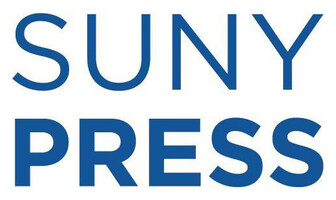
SUNY Press came to ReaderBound with a site that was somewhat limited in its functionality and challenging to maintain. It was also not optimally responsive across devices nor was it accessible by current standards. As it was, the search experience didn’t expose the rich and meaningful structure of SUNY Press’s extensive catalogue.
With a big list and a large number of series to feature, it was time for a new site that could provide SUNY Press with a more powerful web platform with expanded sales and marketing capabilities.
Your books, your way
The State University of New York (SUNY) is a system of public colleges and universities located throughout the state, the largest in the U.S. SUNY Press reflects this scale with a very active list, publishing about 150 titles per year and with a backlist of thousands more. Figuring out how to showcase that extensive catalogue was a key consideration for the new site.
Attention was paid to displaying series in a number of ways: grouped by subject area; shared as a list of active series (with detailed descriptions); utilizing a separate index of discontinued series; and via advanced search.
The new site also marked a sea change in how the press presented its seasonal catalogue. Rather than producing a print or PDF catalogue with the season’s new releases, the press would now rely on a new digital catalogue presented entirely within the site. To support this, a new custom digital catalogue feature was developed to present SUNY Press’ seasonal list by subject, by date, by featured title, and other customizable selections (e.g., new paperback releases). These seasonal catalogues rely on a variety of data points, but especially make use of custom subjects in the press’ ONIX feed, which allows readers to easily target new titles in specific subjects of interest. Along with offering the press a new way to showcase its frontlist titles, the shift to a digital catalogue went from a task that used to be measured out in weeks (that is, assembling, designing, and distributing a new print catalogue) to one that now takes several hours to complete..
Scholarly and trade titles also had to be differentiated, especially through SUNY’s trade and regional-interest imprint, Excelsior Editions. Open Access editions received their own spotlight in the site’s main navigation, highlighting the press’ commitment to this emerging program.
Custom functionality for desk & exam copies
SUNY Press receives a large number of desk and exam copy requests. We created a custom-built form with desired fields and supporting copy. We then embedded request links on every title listing on the site both to make the option more prominent to users and to help drive conversions and course adoptions.
All requests are stored in the website’s content system where they can be easily approved or declined by press staff. This triggers the process for either receiving a copy of the book or a templated “request declined” email. We also built an export into the feature that allows the press to spin up a handy CSV file of time-bracketed requests that can be sent off to their distributor for fulfillment.
Reclaiming staff time and empowering authors
During our discovery process, we learned that SUNY Press was experiencing a significant business pain point. Every month, a staffer spent several days sorting out gratis copies for contributors (which could number in the hundreds, as many titles have multiple contributors). This was a huge task, made more difficult because of changes in contributors’ mailing addresses. We immediately saw this massive investment in staff time and effort as an opportunity for improvement.
ReaderBound’s solution was to build an author services portal into the website. This allows authors to register and log in in order to actively manage an author account (including maintaining their current mailing address). Once verified by a staffer, each author receives a unique coupon code that they can use to easily apply their author discount to purchases on the site.
The press staff also relies on the author account in order to manage the distribution of comp copies. Each author or contributor is responsible for providing their current address in order to receive these copies. With this new self-service portal in place, the burden of maintaining current addresses has effectively shifted from the press to the authors, and the process of managing seasonal distributions of gratis copies has gone from several days of staff time to just hours every month.
Prioritizing sales and marketing
The new SUNY Press site receives a significant amount of web traffic. The staff at the press have taken advantage of these eyeballs and are doing a great job of using banners, alerts, and other site functionality to showcase their books and run promotions.
A lot of the press’ sales and marketing activity is organized around events and scholarly conferences. Press staff use this as an opportunity to provide time-limited discounts tied to conferences and events. They create landing pages, run in a selection of books, call out series, and feature a sales promotion. Effective marketing like this transforms a website from a catalogue into a revenue centre.
Feedback from real users
SUNY Press recently conducted a user survey in order to determine next steps for the site. Feedback was positive, with users reporting a high level of satisfaction, ease of navigation, and no issues of note. A number of users left additional comments at the end of the survey to share their enthusiasm. Generally, they were pleased and found the website to be intuitive, informative, easy to access, and better than some other university presses’ websites.


